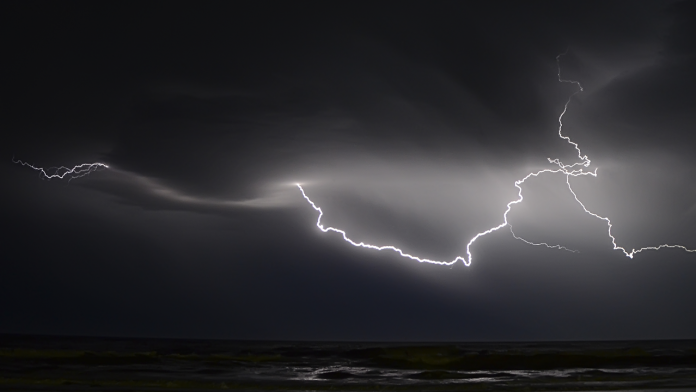A recent report by the World Meteorological Organization claims that there has been a dramatic increase in the number of natural disasters over the last 50 years. According to the WMO Atlas of Mortality and Economic Losses from Weather, Climate and Water Extremes (1970 – 2019), there were more than 11,000 reported disasters attributed to these hazards globally, with just over 2 million deaths and U.S. $ 3.64 trillion in losses.
The report claims that the number of disasters “has increased by a factor of five” since 1970 and that human additions of carbon dioxide are to blame. Referring to this data, WMO Secretary-General Petteri Taalas stated:
“The number of weather, climate and water extremes are increasing and will become more frequent and severe in many parts of the world as a result of climate change. That means more heatwaves, drought and forest fires such as those we have observed recently in Europe and North America.” He further warned: “The warming of the oceans has affected the frequency and area of existence of the most intense tropical storms.”
The chart used to support their alarming claims of a five-fold increase of disasters is shown below and taken at face value appears alarming.
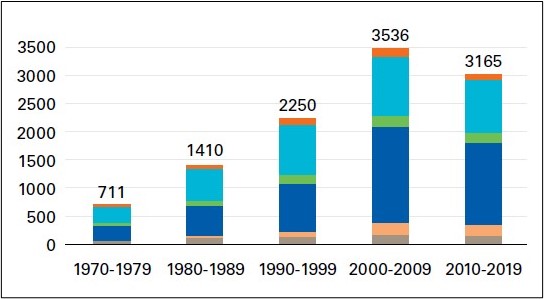
The claims of increasing numbers of these severe weather events should generate alarm if they were correct. Fortunately for the peoples of the world, the facts fly in the face of the reporting. The WMO and its authors chose to misrepresent disaster data as gathered by one of the most reputable agencies in the world, the Centre for Research on the Epidemiology of Disasters (CRED) in their EM-DAT database. The WMO based its reporting on the CRED data as shown below and displayed by Our World In Data.
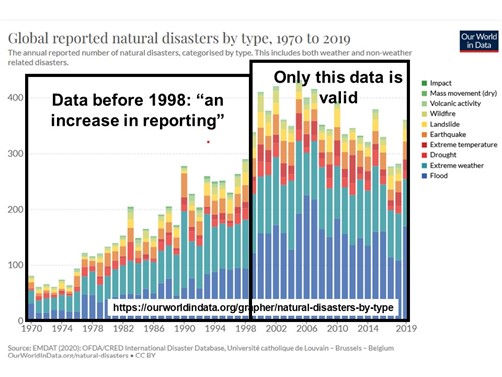
The claims of a five-fold increase in the numbers of disasters appears to be supported by a significant increase in calamities from 1970 until 2000 and a decline over the last twenty or so years. Why the change from increasing disasters over the first 30 years of data and a decline thereafter?
It turns out that the period from 1970 to about 2000 are the years in which CRED was building a data collection system that depends heavily on external reporting. Please note that the title of the WMO chart is “Number of reported disasters,” not “number of disasters.”
As reported in an article in Forbes by Michael Shellenberger, Professor Roger Peilke, Jr, examined CREDs data set and what conditions qualified for reporting a natural disaster and found CRED missed many disasters in its early years of disaster detection and gathering.
“In 1962, the EM-DATA data set shows there were just 24 disasters worldwide,” Pielke noted. “In the 1980s there were just three floods reported for the entire continent of Africa.”
These are just two examples of the woefully incomplete recording of disaster data as CRED was beginning its work of data gathering.
That the chart was driven by reporting rather than numbers was confirmed by CO2 Coalition Science Research Journalist Kip Hansen when he first questioned the validity of the data after its publication in 2019. At the time, he emailed Regina Below, CRED database manager and documentalist, asking her to confirm that the increase in the early period represented an increase in reporting, rather than an increase in actual natural disasters. Her response via email?
“Thank for your e-mail. You are right, it is an increase in reporting.”
In other words, the CRED system’s counts rose as it received reports from more and more sources over the years. Comparing totals from the 1970s with 21st century data is not only inappropriate, but also a blatant misuse of statistics to bolster a pre-ordained conclusion of increasing destruction.
Data from Our World in Data (OWD) confirms long-term trends concerning the declining impact of natural disasters. The OWD reports there has been 92 percent decline in the decadal death toll from natural disasters since its peak in the 1920s. In that decade, 5.4 million people died from natural disasters. In the 2010s, 400,000 did.
As reported in an earlier Climate Realism article, the decline in deaths from natural disasters over the past century may be even greater than OWD reports. As meteorologist Anthony Watts wrote, “[a]n update of the graph in the 2020 peer-reviewed article by Bjørn Lomborg: Welfare in the 21st century: Increasing development, reducing inequality, the impact of climate change, and the cost of climate policies,” shows deaths tied to natural disasters have declined by more than 99 percent.
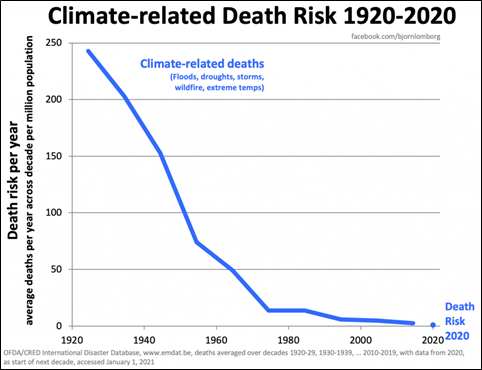
Lomborg reports:
“Back in the 1920s, the death count from climate-related disasters was 485,000 on average every year. In the last full decade, 2010-2019, the average was 18,357 dead per year or 96% lower. In the first year of the new decade, 2020, the preliminary number of dead was even lower at 8,086 — 98 percent lower than the 1920s average.
But because the world’s population also quadrupled at the same time, the climate-related *death risk* has dropped even faster. The death risk is the probability of you dying in any one year. In the 1920s, it was 243 out of a million people that would die from climate-related disasters.
In the 2010s, the risk was just 2.5 per million people — a drop of 99 percent. Now, in 2020, the preliminary number is 1 per million — 99.6 percent lower.”
This dramatic decline in weather related deaths occurred even as global average temperatures increased by a modest 1.3 degrees Celsius.
Digging deeper into the data, Pielke reports the global cost of natural disasters has also declined as a share of GDP between 1990 and 2020, even as the total costs of natural disasters has increased due to rising wealth.
In a 2020 review of 54 studies over the last 22 years, and published in the field’s leading scientific journal, Pielke found ‘little evidence to support claims that any part of the overall increase in global economic losses documented on climate time scales is attributable to human-caused changes in climate,’” writes Shellenberger reporting on Pielke’s findings.
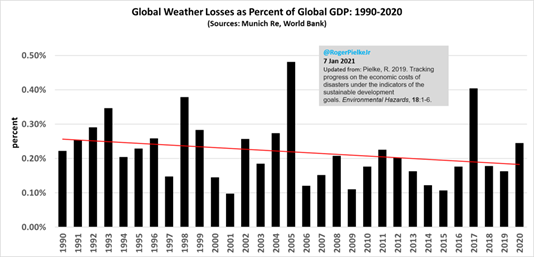
To restate: The WMO released a “study” claiming climate disasters were increasing based on numbers that the authors knew were misleading at best. The actual numbers of disasters since proper reporting has been in place show a decline in disasters over the last twenty years, exactly opposite the hyperbolic claims of the WMO.
The World Meteorological Organization should immediately retract this flawed study and issue a formal statement publicly correcting the record.
This commentary and exposé was first published, in part, at Real Clear Energy on January 17, 2022












